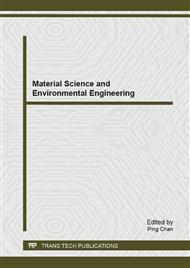p.543
p.548
p.554
p.559
p.565
p.571
p.578
p.585
p.590
Study of the Differences between Vegetation and Soil Spectrum about Alpine Wetland Ecosystem
Abstract:
Using FieldSpec ® 4 Hi-Res portable coverings spectrometer, we have measured the main vegetation and siol reflectance based on different habitats:Surface water swamping meadow, a seasonal water swamping beach, wet beach without of water and sandy in the little Park Lake, East of the Qinghai Lake and analyzed the spectral differences. The results show that: Soil moisture is one of the important factors that affect reflectivity. Under the premise of similar other soil properties, soil moisture and reflectivity shows a negative correlation with each other. 350-1000nm wavelength range is ideal to distinguish vegetation and soil. Due to the presence of water absorption bands, within 1000-1300nm the spectrum derivative of soil and vegetation has a strong similarity, but still can be used to identify the spectrum of vegetation and soil. In addition to sandy habitats, vegetation and soil spectrum has a strong similarity in the 1300-2500nm wavelength range, it is more tolerance translation will confuse the two bands, the spectrum has a strong similarity in the range of 1300-2500nm, so it is relatively easy to confuse the two spectrum.
Info:
Periodical:
Pages:
565-570
Citation:
Online since:
May 2014
Authors:
Price:
Сopyright:
© 2014 Trans Tech Publications Ltd. All Rights Reserved
Share:
Citation:


